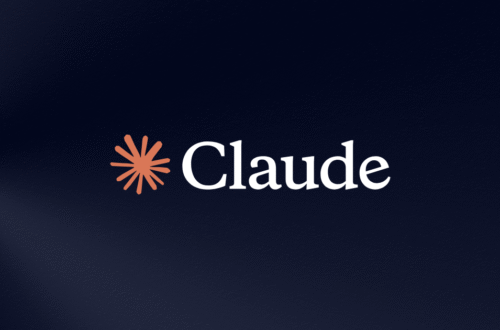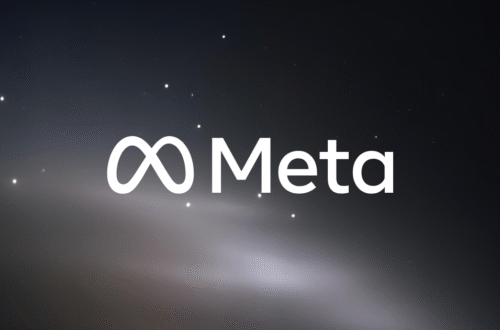The AI world just got a double-shot of espresso, and we’re all buzzing. Within about 24 hours of each other, OpenAI & Google unleashed their next-gen AI assistants on an unsuspecting public. First, OpenAI dropped GPT-4o, an “omni” model that feels startlingly close to a sci-fi movie character. Then, Google hit back at its I/O conference with Project Astra, a slick vision of a future where AI is a constant, helpful companion. This isn’t just another spec-sheet war. It’s the beginning of a frantic race to build a true AI agent, something that sees, hears, & understands our world in real-time. The question isn’t just who’s better, but whose version of the future we’re about to live in.
GPT-4o: OpenAI Swings for the Fences
Let’s get one thing straight: GPT-4o (the “o” stands for omni) isn’t a totally new model. It’s a massive, crucial upgrade. Previously, talking to ChatGPT’s voice mode was a clunky, three-step process: your voice was transcribed to text by one model, sent to GPT-4 for a response, & then that text was converted back to speech by another model. It worked, but it was slow & lost all nuance. GPT-4o shreds that entire pipeline. It’s a single, natively multimodal model that processes text, audio, & vision together. All at once.
Why does that matter? Speed. The live demo showed off response times that are basically human-level. OpenAI claims audio responses can come in as fast as 232 milliseconds, averaging around 320ms. That’s the speed of a real conversation, not the awkward pause-and-wait we’re used to. You can interrupt it, and it adapts. It can hear the tone of your voice & see the expression on your face. Yeah, it’s a little bit wild.
The “Her” Factor is Real
The demos were the main event. We saw GPT-4o act as a real-time translator between two people speaking different languages. It looked at a math problem on a piece of paper & walked the user through solving it. The most jaw-dropping (or unsettling, depending on your vibe) part was its ability to detect emotion. The presenter turned on his selfie camera, breathed heavily, & the AI asked if he was nervous & needed to relax. Whoa.
It’s clear OpenAI is aiming for the empathetic, conversational AI assistant from the movie Her. The model’s voice could adopt different tones—singing, laughing, being dramatic. It felt less like a tool & more like a personality. The biggest power move? OpenAI is giving this power to everyone. GPT-4o is rolling out to free ChatGPT users, a massive strategic decision to get it into as many hands as possible. For developers, the API is now 50% cheaper & twice as fast as GPT-4 Turbo. They’re not just building a better model; they’re making it irresistible to build with.
Project Astra: Google’s All-Seeing Agent
Not to be outdone, Google’s DeepMind team unveiled Project Astra. While GPT-4o feels like a product you can use tomorrow, Astra is more of a mission statement—a very, very cool one. Google’s demo video was slick, showing a user pointing their phone camera at the world while Astra provided a continuous, real-time narrative of what it saw.
The standout feature was its apparent memory & spatial awareness. The user asks Astra to find their glasses, & the AI says, “I remember seeing them on your desk, near the red apple.” That kind of object permanence & contextual memory is a holy grail for AI assistants. It also interpreted code on a screen, identified parts of a sound system, & even came up with a clever name for a pet. Google’s CEO Sundar Pichai described it as a “proactive” agent, built to be truly helpful.
But here’s the catch. It’s a “Project.” We can’t use it yet. The demo, while impressive, was a pre-recorded video. Skepticism rightfully arose about whether it represented true real-time capabilities or was a “concept car” video stitched together with some editing magic. Google insists it was recorded in a single take, but the speed & smoothness feel a bit too perfect. It’s a promise, not a product. At least for now.
The Showdown: Speed vs. Vision
So, who’s winning? It depends on your scorecard.
- Availability: OpenAI, no contest. GPT-4o is rolling out. Project Astra is a YouTube video. Advantage: OpenAI.
- Latency: Based on the live demo, GPT-4o’s real-time conversational ability is proven. Astra’s is implied. We have to take Google’s word for it. Advantage: OpenAI.
- Core Concept: This is where it gets interesting. GPT-4o is focused on expressive, emotional, human-like interaction. Project Astra is focused on continuous awareness & memory—a universal agent that understands your world. It’s a subtle but important difference. One is a better conversationalist; the other aims to be a better assistant.
- Ecosystem Strategy: This is Google’s home turf. As Wired put it, Google is playing the long game. Astra isn’t just for a phone; it’s destined for Android, Search, Maps, Workspace, & probably some future AR glasses. OpenAI has to forge partnerships (like the rumored one with Apple). Google owns the entire stack. Advantage: Google.
The Ethical Minefield We Just Stumbled Into
This tech is incredible, but we need to talk about the creepy side. An AI that can read your facial expressions for emotional cues is a massive privacy concern. Where does that data go? How is it used? What happens when it misinterprets your emotion? This isn’t theoretical anymore.
Then there’s the voice issue. OpenAI got into hot water over the “Sky” voice, which sounded uncannily like actress Scarlett Johansson, who famously voiced the AI in Her. Johansson stated she was approached but declined, yet the similar voice was released anyway. OpenAI has since pulled the voice, but the episode is a giant red flag. As NPR reported, it highlights the urgent need for clear laws & best practices around voice synthesis & digital likeness.
For any developer building on these platforms, the new mantra must be “explicit consent.” Don’t just activate a camera or mic because the API lets you. Explain *why* you need it & give users an easy way out. Building trustworthy AI is now just as important as building capable AI.
Your Move: What To Do Now
This race is moving at light speed, but you don’t have to just watch from the sidelines.
For Developers:
The GPT-4o API is your new playground. The lower cost & increased speed mean you can finally build those real-time multimodal apps you’ve been dreaming of. Think tools for the visually impaired that describe the world, or language tutors that correct your pronunciation on the fly. Start experimenting now, because your competition already is. Keep an eye on the Google AI Studio for when Astra’s capabilities start trickling into the Gemini API.
For Everyone Else:
Be a critical user. When you get access to the new voice mode in ChatGPT, test its limits. Is it actually helpful, or just a parlor trick? Remember that demos are designed to impress. The real test is how these tools perform in the messiness of the real world. Stay informed, ask questions, & demand transparency from these companies.
Useful Resources to Go Deeper:
- OpenAI’s official GPT-4o announcement: Hello GPT-4o
- Google’s recap of all the I/O 2024 AI news: Highlights from Google I/O 2024
- To understand the tech better, check out the Hugging Face blog for explainers on multimodal models.
Ultimately, OpenAI landed a powerful, tangible blow with GPT-4o. It’s here, it’s fast, & it’s impressive. Google countered with a compelling, cohesive vision that leverages its massive ecosystem. Right now, OpenAI has the momentum & the buzz. But you can never, ever count Google out. They are playing a longer, broader game. The race to create our first true AI companion is on, & the next year is going to be an absolutely wild ride.


